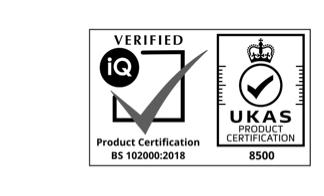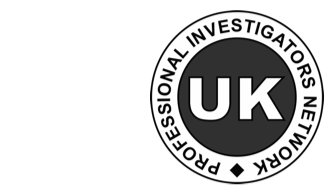Unauthorised absence is when an employee has taken time off from your business without informing you and/or obtaining authorisation from you in advance. This is known as being AWOL (Absent Without Leave) or absent without permission.
Unplanned and unauthorised absences can have a significant impact on both your business and the workforce, which can damage your business from an economic and operational perspective. The unexpected absence of a worker can leave you with insufficient time to make the necessary rearrangements to mitigate any disruption to the services being provided. It can also have a wider impact on your workforce, as co-workers are likely to have to pick up the duties of the absent member of staff, which can affect morale and result in feelings of unfairness.
Employers should have a policy in place that sets out the principles and procedures that would be followed when employees take unauthorised absences. The policy would ensure that there is a consistent and fair approach to managing cases of unauthorised leave.
What is an Absence Management Process?
To improve absence management processes and deter staff from taking unauthorised absences, organisations should ensure the following:
- A disciplinary policy is in place that lists unauthorised absence as a form of misconduct. For clarity purposes, it is a good idea to provide examples of what is considered to be unauthorised absence (e.g. failing to attend work and notifying the company of the reason for the absence, and not providing evidence of sick leave in accordance with the Company policy).
- Employees are made aware that unauthorised absence is unacceptable and could lead to disciplinary action. You should share any new or revised policies with your workforce to make clear the consequences of not following internal processes for unauthorised absence.
- Employees are aware of how to report an absence, request statutory leave, and the principles/procedure around how their leave is authorised.
- Conduct effective and consistent return to work meetings in order to identify the root of the problem, the action that has been taken, the likelihood of it recurring and any support or provisions that can be made to prevent it from recurring.
- Inform the employee of the possible consequences of unauthorised absence, it may be in the form of a letter of concern, verbal/formal warning or disciplinary action but you should ensure it is in line with your disciplinary policy
Communication and managing expectations are key to improving your company’s absence management processes.
How to Manage Absence at Work
When an employee does not show up for work, you must make reasonable attempts to contact them to ascertain the reason for their absence, leaving voicemail messages where possible and asking the employee to contact work at the earliest possible opportunity.
You should also try to communicate with the employee through various means, such as by email, post, text, and phone all contact numbers. In some circumstances, it may be appropriate to contact the next of kin if you have concerns for the employee’s welfare.
You should also raise your concerns in writing to the employee if reasonable intermittent attempts to contact them have failed. The letter should include the following:
- the times where contact has been attempted, through what means and by who
- advised that they are deemed to be absent without leave
- advise that if there is no good reason for their absence their pay will be stopped
- provide a reasonable deadline by which the employee must make contact
- warn the employee that if no contact or information is provided by a deadline then the employee would be invited to a disciplinary hearing as unauthorised leave is a disciplinary matter
- ensure that any letter is sent through various means, such as email and post (recorded/signed for delivery)
You must continue to make reasonable attempts by various means to contact the employee until the deadline has passed.
If the employee makes contact or returns to work then you should meet with the employee to investigate and understand whether there are good reasons for the absence and decide what the appropriate steps are in accordance with Company policies (This can be conducted in a return to work meeting)
If the employee does not make contact by the deadline set, then a further written letter should be sent (through various means) to the employee to invite them to a disciplinary hearing. This letter should stipulate the full details of the absence, including dates or shifts missed and information regarding contact attempts by your company. The employee should always be given fair notice to attend and be given the right to be accompanied by a trade union representative or work colleague.
You should follow the disciplinary process in line with your Company’s disciplinary policy or the ACAS Guidelines on disciplinary and grievance procedures to ensure any decisions taken about warnings or dismissal are fair and reasonable.
When to Hire a Private Employee Investigator
When short leaves of absence turn into long-term sickness claims, you may find that communication becomes less frequent, doctor’s notes become more vague, and employees’ intentions to return to work become less apparent.
If there are suspicions that an employee may be malingering, then your company may want to seek the help of a private investigator to conduct an employee investigation. Whilst this may seem like a strong response; provided the investigation is fair, justifiable and proportionate, your company may have no other way of effectively determining whether the sickness claim is being exaggerated or not, especially when communication has become difficult.
It is important to ensure that the relevant disciplinary process has been followed before jumping to the conclusion that your company needs a private investigator, but providing it is done so in a compliant manner, the use of a private investigator can be a powerful tool to deter another employee’s from malingering in the future. You may feel that the employee’s conduct is sufficient to dismiss them and that you have evidence to show on the basis of probability, they are doing what you suspect, there may be no need for further work. However, if the evidence is ambiguous or insufficient it can be a costly mistake, leaving your business vulnerable to claims or tribunals, especially if the grounds for their absence relates to an underlying health condition, disability or other protected characteristic.
Call us now if you need to gather the necessary evidence to make informed decisions without leaving your business at risk.

 Surveillance
Surveillance Matrimonial Investigations
Matrimonial Investigations Bug Sweeping
Bug Sweeping GPS Vehicle Tracking
GPS Vehicle Tracking Lie Detector Test
Lie Detector Test Person Tracing
Person Tracing Employee Investigations
Employee Investigations Asset Tracing
Asset Tracing Fraud Investigations
Fraud Investigations Injury & Insurance Investigations
Injury & Insurance Investigations







